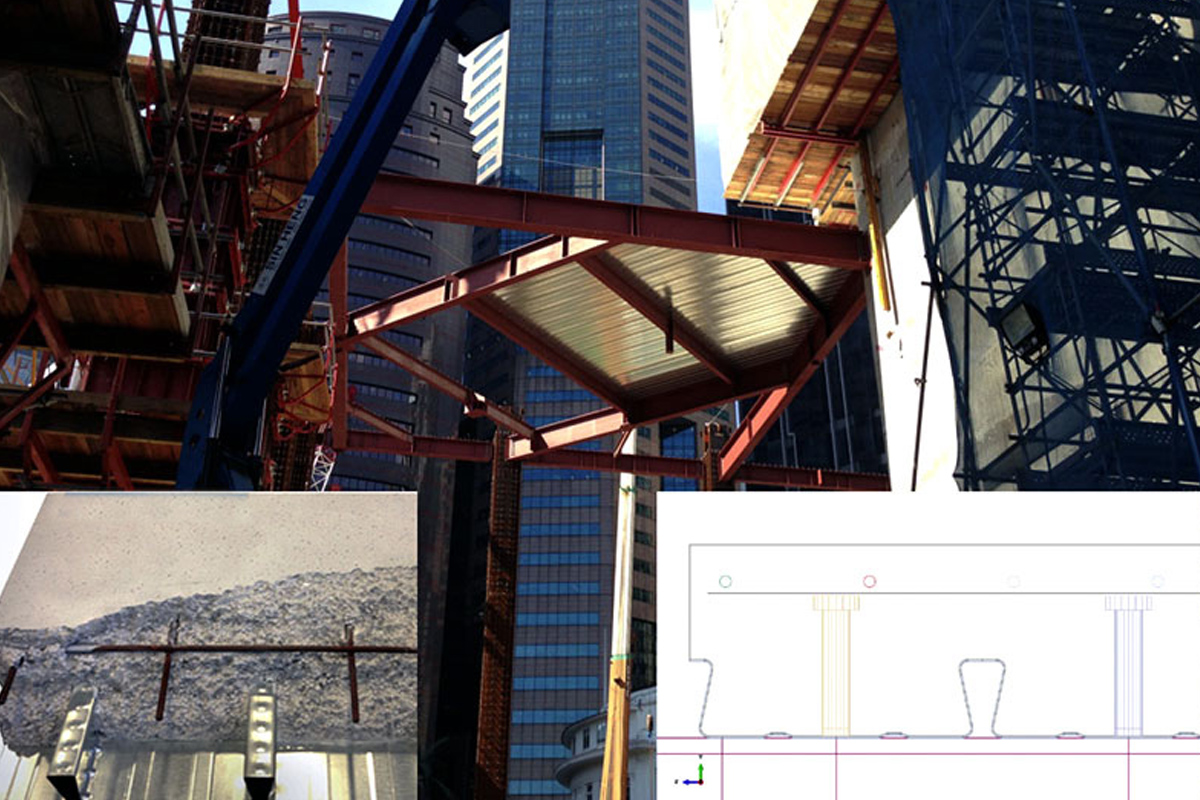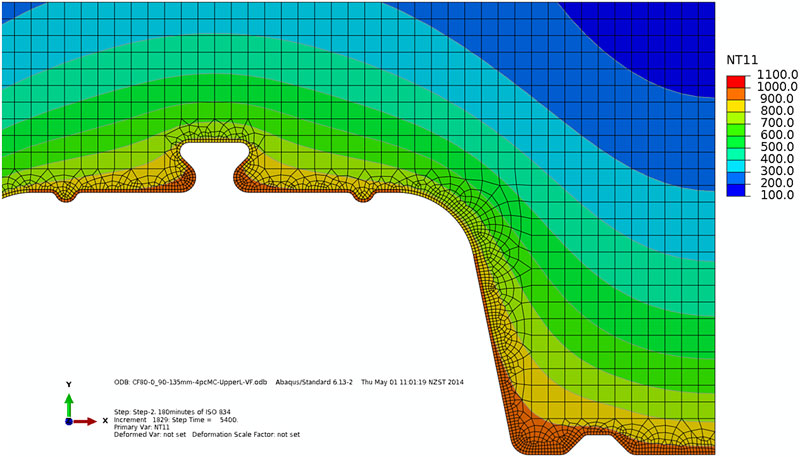HERA successfully provided SGD$180k savings to their client’s Singaporean 40-storey building
Numerical simulations (i.e. advanced finite element analyses) have been performed for an overseas Client by HERA’s Structural Systems division in order to estimate the fire performance of a composite slab with a re-entrant profiled steel sheet used in a prestigious 40-storey building in Singapore.
The numerical predictions were subsequently verified through a full-scale loaded fire test that was conducted in the UK and to obtain a fire rating according to accepted international standards.
The purpose of the simulations was to optimize the design of the composite slab, by eliminating unnecessary reinforcement bars, which are generally required to achieve the target fire resistance rating (FRR).
The resulting reduction to the amount of reinforcement bars led to cost savings of up to $180k to the Client.
Heat transfer analysis involving convection, conduction and boundary radiation was undertaken on a detailed solid modelled slab as part of a new steel-concrete slab product development.
The simulation accounted for the thermal contact resistance at the cold-formed steel-concrete interface.
The novelties of the model to incorporate the temperature dependent formulation of the interface thermal conductance provided a realistic prediction of the cross-sectional temperature field, which matched the fire test measurements.
The slab top surface temperatures were assessed according to EN 1363-1:2012 to enable comparisons to be made with the insulation performance criteria.
From the explicit-quasi static simulation, the slab load bearing capacity was calculated, which is expressed by the limiting largest deflection and deflection rate for flexural loaded structural members as given in EN 1363-1:2012.


The numerical simulations demonstrated that the overall fire resistance was limited by the load bearing capacity criteria.
The predicted insulation and load bearing capacity compared very favourably with the fire test measurements, which provided confidence in the methodology used in the study. A peer-reviewed paper on the performed assessment has been published at the 2014 Simulia Community Conference.
The know-how developed from this consultancy project has subsequently been used on work with University of Auckland in developing the design provisions for composite slabs in fire for the forthcoming composite design standard AS/NZS 2327.
The temperature distribution under the standard temperature-time curve given in ISO 834 have been predicted for the most commonly used New Zealand composite slabs, such as ComFlor 60, ComFlor 80 and ComFlor210, Concrete Saver 60, Flatdeck and Ultraspan 80.
Several concrete slab thicknesses were considered for concrete with the highest thermal conductivity according to EN 1994-1-2:2005.
